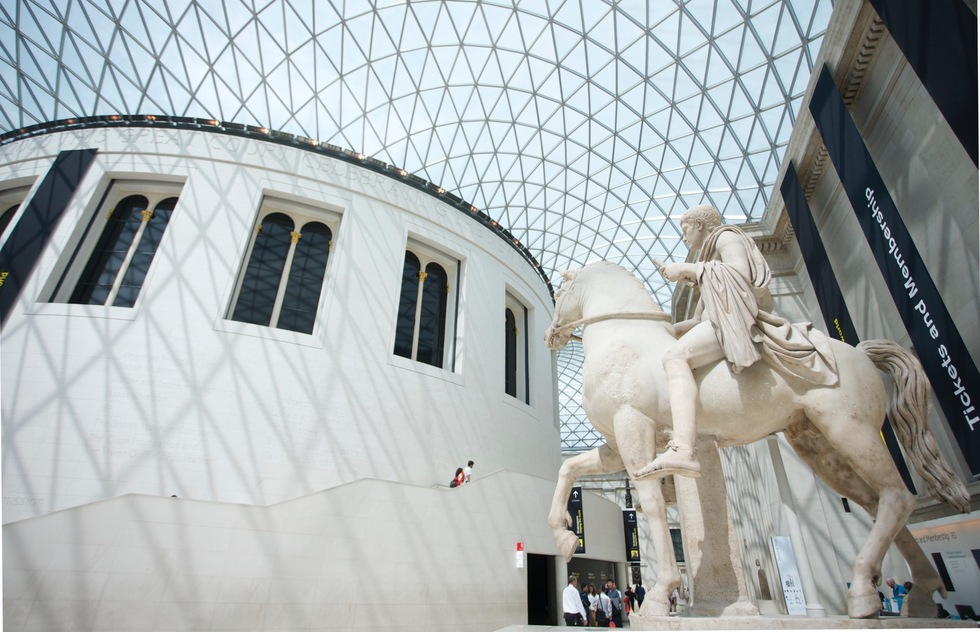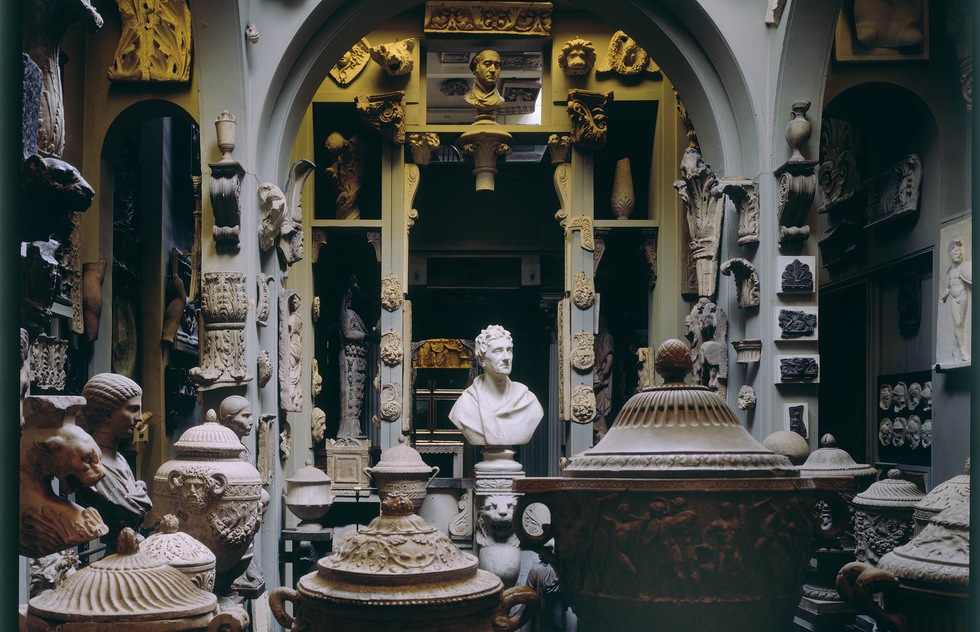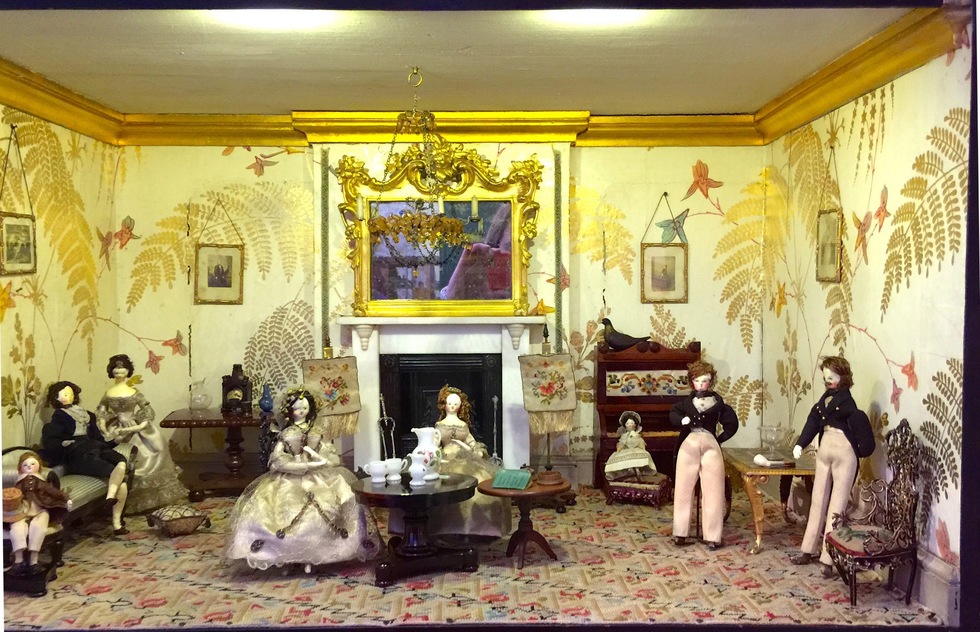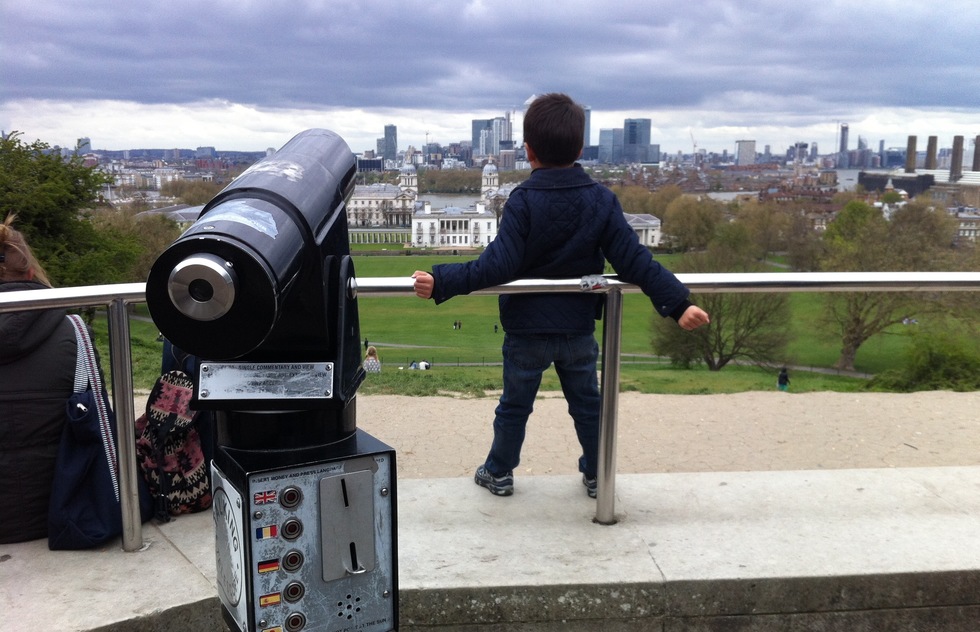25 Incredible Free Museums in London
By Jason Cochran
London can be an expensive vacation. Thanks to landing fees, flying there hits hard, and once you arrive, high average nightly rates do even more financial damage. But there is a saving grace: Thanks to smart social policies, some of the city's finest museums (like the British Museum, pictured) cost nothing to see. And considering London is home to so many world treasures, it's possible to spend a week enjoying a sublimely rich vacation without spending a penny on admission—which offsets the other costs somewhat. Here's what to see.
The British Museum
The top attraction in all of Britain, which receives more than 6 million visits in a typical year, the British Museum is packed with unbelievable treasures dating back to the start of recorded human history. It has more than 8 million objects in its collection, but 80,000 of the most notable are on display, including the whimsical Lewis Chessmen (pictured), a horde of ancient chess pieces carved from walrus ivory and unearthed in Scotland in 1831. Other flabbergasting stuff: the Rosetta Stone that unlocked ancient languages; the sculptures that once topped Athens' Acropolis; and the jewelry, Byzantine silverware, and armor found in 1939 at the site of a lavish Anglo-Saxon grave, the Sutton Hoo burial. It's not a starchy place, either: The British Museum has lots of maps for kids-friendly exhibits and hands-on opportunties.
The British Library
You must not miss the exhibition gallery of the country's main library, the British Library, where you'll find some of the most precious books and journals owned by the Empire: Lewis Carroll's hand-drawn copy of Alice's Adventures in Wonderland, the oldest known printed book in the world, lyric doodles by The Beatles, the oldest known Christian Bible, and the Magna Carta itself. It's easy to find: right next to St Pancras, where the trains to Europe depart.
Sir John Soane's Museum
A museum like none other, this townhouse in Lincoln's Inn Fields is crammed from floorboards to skylights with priceless antiquities collected by the architect whose bombastic, neo-classical style definied London at the dawn of England's most powerful period. His will decreed his trove must be left untouched forevermore, and so it has been mostly undisturbed since the days of young Queen Victoria—sarcophagi of translucent limestone, chunks of ancient buildings, and priceless works by Hogarth and Canaletto hidden inside false walls. For extra effect, go during one of its evening candelight tour events.
Science Museum
Some cities' science museums are nothing but lightweight field trip locales, but don't forget that the scientists of 18th- and 19th-century London helped define the world. This Science Museum is where their achievements are stored, from groundbreaking steam engines to to the first computers to entire jet airplanes. You'll find floor after floor of relics. Of course, being a science museum, it also offers a few sillier, family-friendly attractions like sensory movies and motion-simulator rides.
Natural History Museum
Beside the Science Museum in South Kensington, the Natural History Museum outdoes the ones typical of the genre. Sure, there are dioramas aplenty of taxidermied animals, but you'll also find an earthquake simulator, dodo skeletons, and a positively stunning, cathedral-like building (1880) where the walls of the main hall teem with terra-cotta creatures of every genus and continent. It's also kid-friendly to the extreme.
Museum of London
One of the most unfairly under-seen attractions in town, the Museum of London (near St Paul's Cathedral) tells the mighty history of this mighty city through surviving objects: leather pails used to fight the Great Fire of 1666, the original bronze Art Deco lifts from Selfridge's department store, diver Tom Daley's swim trunks—yeah, it runs the gamut. The presentation is state-of-the-art, including a fascinating walk-through area the re-creates a Victorian streetscape and a full-scale mockup of the octopus-like 2012 Olympic torch, and the Museum always receiving new finds from construction sites, so the horde grows by the day.
National Gallery
It's only the best painting gallery in the world. Other museums may have more works, but the National Gallery has the finest works from the best artists—2,300 of them on display. Da Vinci to Michelangelo, Rembrandt to Seurat—you'll recognize nearly everything you see, all housed in a palatial facility right on Trafalgar Square that was built, in Victorian times, to ennoble people of all classes with the majesty of culture. Catch the 1pm "Lunchtime Talks" daily that spotlight one work or artist at a time—they're also free. We guarantee the Gallery will never be as empty as in this picture.
Bank of England Museum
Never has a museum plumbed the history of money so thoroughly—and yet it charges nothing to see it. The Bank of England (which was designed by Sir John Soane himself) is too smart and too responsible to talk down to you, so put on your thinking caps. Despite its intelligence, the star attraction is the chance to lift a real 28-pound bar of gold (pictured) that was given to Queen Elizabeth II.
The Wallace Collection
The Wallace Collection, one of the best private collections of paintings (particularly Old Masters) in the world, was assembled long ago with exquisite (and prescient) taste and installed in a mansion off Oxford Street, and consequently, a visit can feel soothingly domestic, like a wander through a friend's preposterously well-appointed home. You'll even see some of Marie Antoinette's monogrammed furniture. But then you arrive at the arresting sweep of the Great Gallery (pictured), one of the most perfect gallery spaces you'll ever enter. When you're done, take tea in the Wallace's upscale courtyard restaurant.
The V&A
The V&A, or Victoria and Albert Museum, is deservedly one of the most beloved museums in the world, and a favorite of nearly everyone who ventures inside. Here you'll find a repository of beautiful things from every age and culture (clothing, furniture, sculpture, dinnerware, stained glass, carpets—the curators' appreciative eyes rove everywhere) plus a steady stream of blockbuster temporary exhibitions. The latter may charge an entrance fee, but the iconic core collection is yours to enjoy with no strings attached.
Young V&A
Across town in East London, the V&A also curates the Young V&A (once called the Museum of Childhood), an under-appreciated gem that collects toys (like this dollhouse) and games from across the years and fills the daytime with a roster of activities for children and families.
National Maritime Museum
See that hole in the shoulder? That wasn't caused by moths. That's the bullethole that claimed Admiral Horatio Nelson and landed him in stone atop Nelson's Column in Trafalgar Square. Nelson is credited with fending off Napoleon, which cleared the way for British world supremacy as a naval force and super-powered British wealth. That rich history, from the slave trade to the Titanic, is unsparingly retold in artifacts at the National Maritime Museum in Greenwich. It's not as dull as you might guess, and there are tons of things for kids to see and do, especially on weekends.
Old Royal Naval College
Across from the Maritime Museum on the Thames, the handsome Old Royal Naval College complex, mostly by celebrated architect Christopher Wren, is a UNESCO World Heritage Site. You might recognize it as having played 1830s Paris in the movie musical Les Misérables. While you're here, sit in the garden at the wonderful Meantime Greenwich Brewery for a pint that was brewed in the same place that made beer for sailors hundreds of years ago. (Nearby you can explore the famous Cutty Sark ship—but that's not free.)
The Queen's House
You do not want to miss the royal villa called The Queen's House, which was designed by Inigo Jones in 1616 and in 2016 emerged from a full restoration that spared no expense and returned artwork that hadn't been in the house since 1650. Make sure to capture this emblematic angle of the famed Tulip Staircase, which spin nautilus-like into the air without means of support from beneath. Inspect your photographs carefully later, though, because more than one person has spotted a ghost on these same stairs.
The Royal Observatory
Although you'd have to pay to enter its courtyard and wait in line to take a photograph of yourself standing a precisely 0 degrees longitude astride the Prime Meridian, parts of the Royal Observatory are free to visit. Those include exhibits on time and a small astronomy center, but even paying nothing, you can still watch the red Time Ball drop each day at 1pm and relish this marvellous view of East London and Canary Wharf from Greenwich Park. (Here's a secret: You can still stand astride the Prime Meridian for free by walking along the retaining wall that runs along the north of the Observatory courtyard.)
Hunterian Museum
If you like Nelson's death coat, you can't miss the ghoulish specimens on display at the Royal College of Surgeons' Hunterian Museum across from Sir John Soane's Museum on Lincoln's Inn Fields. For more than two centuries, the RCS has been collecting and jarring medical anomalies, malformations, and mishaps, which they gleefully display in this recently refurbished museum. For your stomach's sake, please don't schedule a visit near lunchtime.
Kenwood
Did you see the movie Belle? This is where the real Belle grew up and where that movie was shot. It's also the country house where Julia Roberts' character was filming a movie in Notting Hill. Even if that movie trivia doesn't interest you, Kenwood commands a surprisingly substantial art collection (including John Singer Sargent, Vermeer, and Rembrandt), and a stirring view over Hampstead Heath to the heart of London. It's like being in the English countryside—except you can take the Tube there.
Museum of the Home
Museum of the Home (once called the Geffrye Museum) is like three museums in one: Outside, you have gorgeous gardens, including some areas that only include plants that would have been planted in Shakespeare's time. But you also learn from the buildings, which are former "almshouses" constructed to house the poor in centuries past. Last, when you go inside, you find exquisite examples of living spaces, with plenty of rare furniture and decorative items, from homes ranging from the 1600s to recent decades. It's a unique institution, and you'll find it in Hoxton, one of the city's current hipster hangouts, full of great food and boutique shopping.
Tate Modern
Well over 5 million people visit Tate Modern each year, and the number will only grow. The 2000 conversion of a horrid disused power station into a post-industrial capital of contemporary art utterly transformed this area of the Thames. There are many reasons to go: constantly changing exhibitions, new monumental works created for its giagantic Turbine Hall every few months, and a rooftop bar/restaurant with a view like this. A footbridge crosses the Thames, linking it to St Paul's Cathedral.
Tate Britain
Upstream from Tate Modern, past the Houses of Parliament in Pimlico, Tate Britain displays the very best of British art, including the finest stash of J.M.W. Turners in the world. One of our favorite paintings is this one, of Hamlet's Ophelia going insane and drowning herself, by Sir John Everett Millais, whose own likeness stands in statue form behind the building. It could take hours to see the Tate Britain properly.
The National Portrait Gallery
Kate Middleton, better-known now as Catherine, Duchess of Cambridge, is just one of the thousands of historical faces captured at the National Portrait Gallery, found around the back door of the National Gallery off Trafalgar Square. Here, the fun is getting lost in the biographical sketches of the visages that so vividly stare you down from across time. The best moment to go is on Friday evenings, known as its after-hours Late Shift opening, when wine is served and the galleries brim of concerts, talks, and sketching classes.
Horniman Museum
In South London's Forest Hill, you'll find a fascinating institution that wears many faces: a hilltop garden with sweeping views, exhaustive displays of musical instruments (pictured), a full natural history museum stocked with countless specimens (extinct and extant), and even an aquarium. The Horniman is a leftover of the Victorian days when museums stretched in every direction to educate the masses who otherwise received no schooling, and it's a delight for family outings.
Dulwich Picture Gallery
It's yet another thing by Sir John Soane—in 1817, he designed this gallery. If it looks standard to you, that's because it created the standard. Before it was built, galleries didn't look like this. In fact, most artwork was kept in private homes. The style and objectives of the Dulwich Picture Gallery wound up inspiring the National Gallery as well as countless museums and institutions around the world. It's literally a prototypical museum, and its collection is still as perfect as the ideas it inspired. In fact, we were able to use this old depiction of it because the Gallery hasn't changed a bit since then.
Wellcome Collection
The legacy of a very eccentric pharmacist born in the American Midwest, the items at the Wellcome Collection delve into all aspects of the human body, especially its taboos. It's often defined by whatever temporary exhibition is on (we won't soon be able to erase the things we learned at a recent show about crime scene forensics or the one about human sexuality), but whatever is happening there, it's going to be eye-popping, educational, and sometimes esoteric.
Houses of Parliament
Yes, if Parliament isn't sitting, you can tour it. And what an epic tour it is, because Britain's government actually sits in the remnants of a former palace. From the chilly stoicism of Westminster Hall (built in 1097) to the redundantly rococo Victorian embellishments around the Houses of Lords and Commons, a Houses of Parliament tour is an opportunity to stand where history happens again and again. Most visitors won't be able to go into the tower containing Big Ben—that's only for British subjects—but you'll stand beneath it as it sounds. Book this one in advance.
Frommer's EasyGuide to London
Those 25 free museums are just a sampling of London's treasure trove—for the rest of the best, including affordable hotels, you'll want a copy of our award-winning guide to London, which is updated every single year.
































